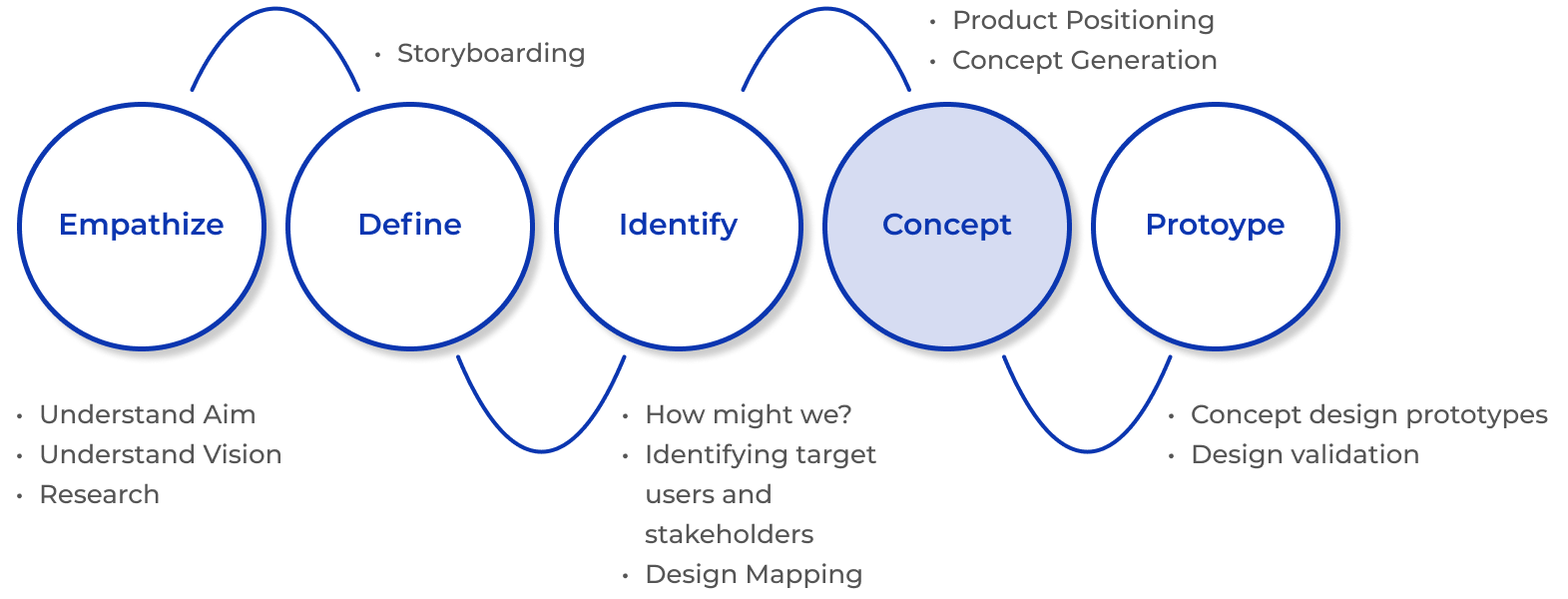Statheros
Cup designed for tremor patients - A Concept
A cup designed to deliver utility in vibration dampening, reliability in ensuring patient wellbeing, and aesthetics that doesn’t draw unwanted attention, and thus providing essential tremor patients with both functional and emotional value.
Summary
Essential tremors inhibit patients from performing the daily task of drinking from a standard cup. Although medicinal and surgical procedures to treat this disorder exist, such methods are stigmatized amongst the majority of the patients, causing them to rather cope with their symptoms than to seek treatment. Without properly addressing hand tremors, patients would cause spillage, inflict injuries, and attract unwanted attention. Therefore, essential tremor patients are in need of a noninvasive assistive device that would allow them to drink easier.
Role
Ideation, Sketching, Storyboarding, Prototyping, Research and Analysis
Tools
SketchUp, Miro
Timeline
Team Project, 3 months
Type
Analytical Product Design
Objective
The project goal was to identify a design problem, explore solutions, conceptualize, and present a potential user value case. Our group chose to work in the Healthcare domain. We focused on addressing the ‘drinking from a cup’ issue for essential tremor patients by designing a concept for a tremor cup that adds both functional and emotional value. We aim to design an intelligent, sensor-based device that can perceive the tremor produced in the hands of the patients while they perform their daily activity of drinking from a cup.
Scope
Given that tremor-related disability can be significant, and the increasing number of problems being faced by them, this neurological disorder is becoming a major problem, and to counter this problem is a major challenge as well. Being aware of this challenge, this project is a stepping stone towards solving this problem to some extent.
Design Process
Storyboard
After conducting preliminary research and gaining a comprehensive understanding of the issue at hand, I proceeded to design a storyboard that effectively illustrates the profound emotional significance experienced by individuals coping with tremors in their day-to-day existence.
Target Users and Stakeholders
Investors
Doctors
Government Regulatory
Health Insurance Firms
Manufacturers
When exploring who the target users would be for our product, multiple factors needed to be considered. We identified the different categories tremor patients fell under, with the three main groups being those with Ataxia, Parkinson’s Disease, and Essential Tremor (ET). Ataxia, although results in tremor-like behaviors, does not cause uncontrollable, rhythmic shakes, but rather creates difficulty in hand-eye coordination within patients in a cognitive sense. Through the use of stakeholder analysis, those who are not necessarily users of the product but are still affected by the product were identified.
ET Patients
Conceptualization
To maximize both functionality and aesthetic appeal for assistive cup holders, multiple ideas were made during sequential brainstorming sessions. In the first session, I jotted down the ideas that we already had while looking at prior arts. After that, I reiterated some design concepts during the brainstorming process while omitting the previous ideas in a second session. Finally, in the third session, we brainstormed design concepts that are considered impractical, but could still allow essential tremor patients to drink water properly. This sequence not only allowed us to identify design ideas worthy of concept convergence, but also helped us to recognize the design flaws to avoid.
Concept Convergence
To maximize both functionality and aesthetic appeal for assistive cup holders, multiple ideas were made during sequential brainstorming sessions. In the first session, I jotted down the ideas that we already had while looking at prior arts. After that, I reiterated some design concepts during the brainstorming process while omitting the previous ideas in a second session. Finally, in the third session, we brainstormed design concepts that are considered impractical, but could still allow essential tremor patients to drink water properly. This sequence not only allowed us to identify design ideas worthy of concept convergence, but also helped us to recognize the design flaws to avoid.
Active + Passive Handle Dampers
Product Design
Outer Surface Design - Concept
Passive MagLev
Six Axis Platform Control
Product Design Mechanism and Parts
Design Analysis
Universal design and assistive technology have played an integral role in accommodating those with disabilities, who will inevitably be over-represented in the population of users. The best solution may be a combination of the two, using universal design wherever commercially practical and using assistive technologies to provide sufficient advantage to the user. I was able to develop the following flow to understand what factors we may need to consider while analysing the design of our product.
Design Validation
The goal of Statheros is to improve the drinking experience for essential tremor patients through a means of vibration rejection. We want to conduct real user testing by visiting health care centers. Roll out a survey that aims to compare tremor patient experience with and without Statheros while drinking from a cup, thus gaining feedback on what aspects of Statheros are desirable and what attributes are still in need of improvement.
What Value will Statheros bring to the User?
Diminish stress of drinking in social settings
Help those who feel otherwise hopeless about tremor mitigation
Lessen the chance of the user hitting his/her face with the cup, lowering the risk of injury
Less spillage therefore creating a better drinking experience
Adding more emotional and functional value
What I learned
Building empathy for a user population I did not know a lot about helped me grow immensely as a designer.
I enjoyed doing research and developing ideas during the course of this project. I worked with a team of mechanical engineers and they were more focused on the engineering aspects of the product.
I was able to learn and build my understanding of engineering design and used this as an opportunity to leverage my skills in user experience design to formulate design concepts for the product.
Since I designed and developed several concepts, my knowledge of feasibility and technical contraints improved drastically, and I was able to set realistic product milestones.
What can be improved?
As a result of the limited time and resources available to our team, we encountered certain limitations in terms of technical implementation, leading to an impact on features and designs.
Given more time, I would have liked to work on establishing partnerships and relationships with medical institutions to generate more awareness and work around developing this concept to a viable product for tremor patients.









